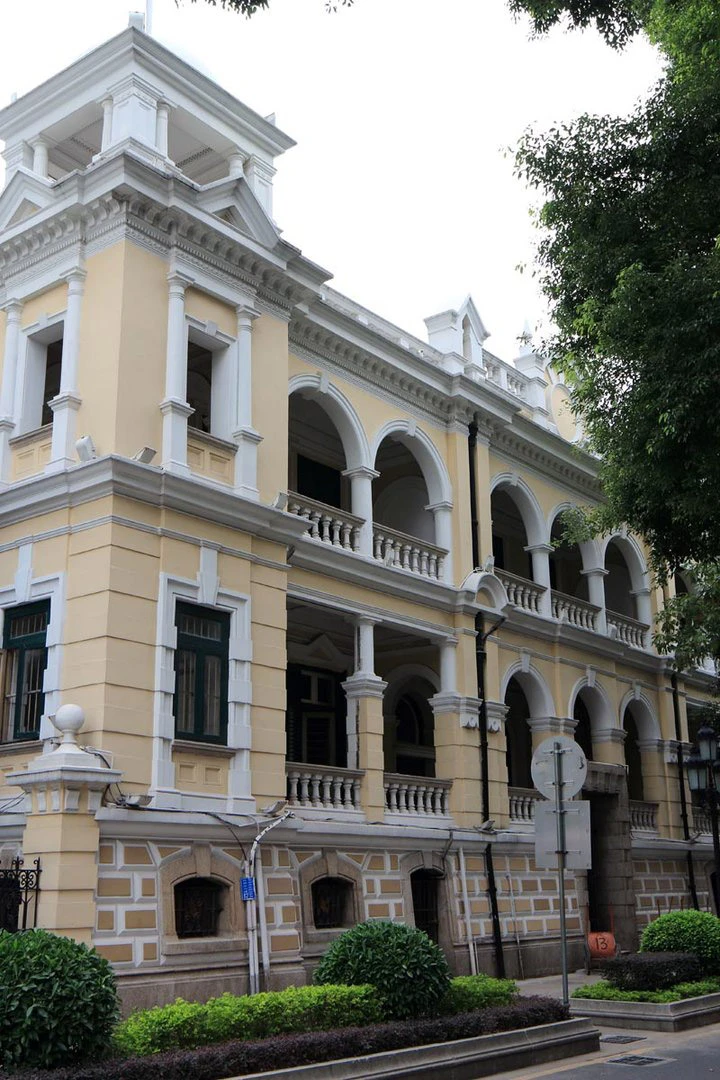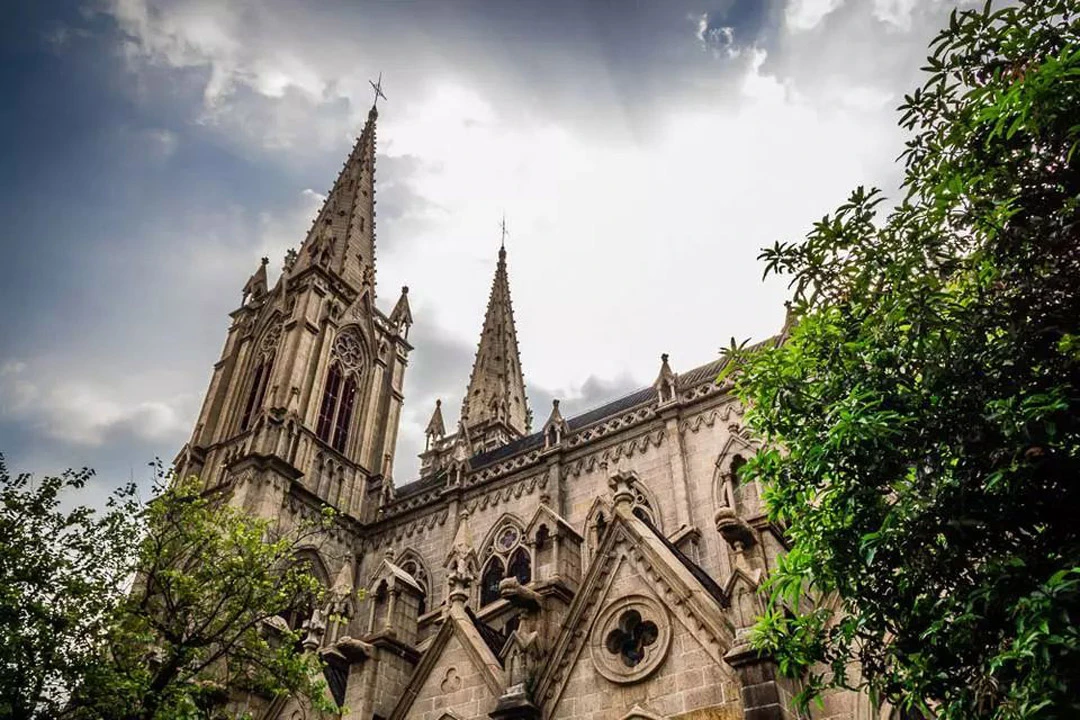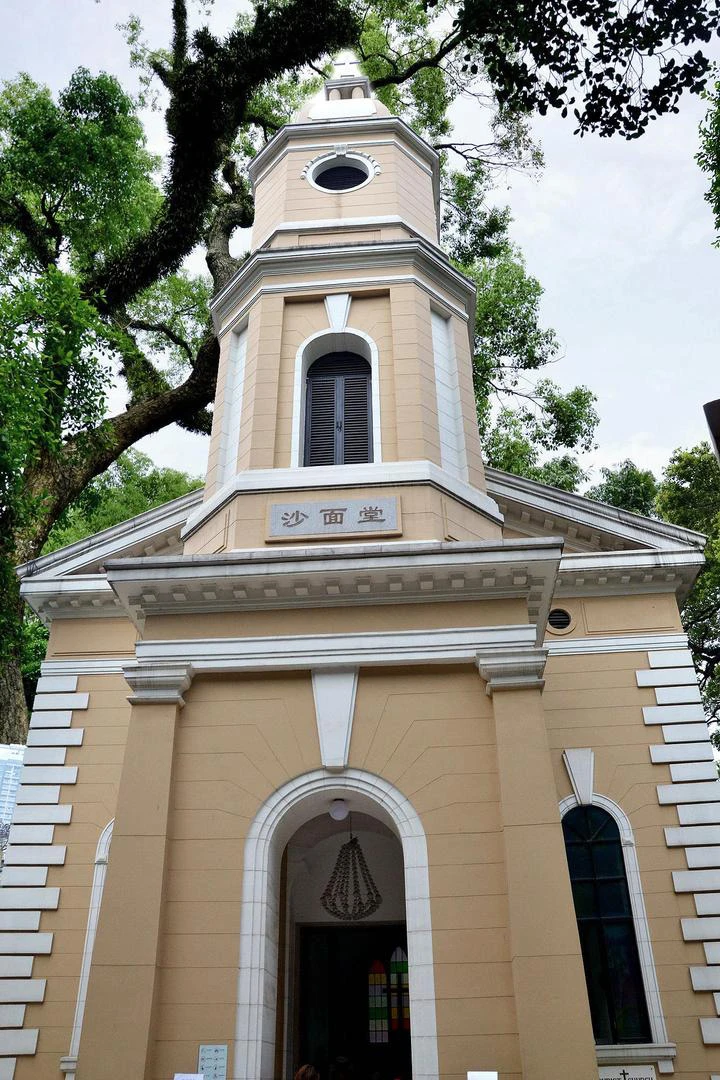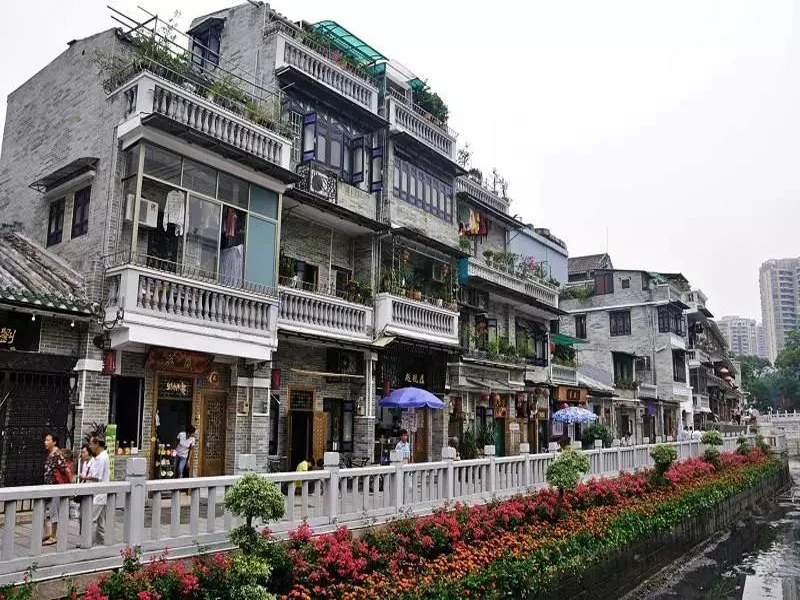Guangzhou, a modern metropolis, has remarkably preserved many old streets and buildings, unlike Beijing, where the city walls have been demolished. The ancient charm of the Xiguan Dawu, the Qilou streets, the strong Lingnan flavor, and the quaint and picturesque cobblestone alleys all offer a respite from the monotonous and cold modern architecture, allowing people to return to the essence of “living” and “life.”
Dongshan, a district in Guangzhou, rose to prominence during the late Qing Dynasty and the Republican era due to the establishment of military training grounds and the Guangdong Consultative Bureau, as well as the return of a large number of overseas Chinese from the Americas who purchased land and built houses. Over the past century, Dongshan has become a gathering place for overseas Chinese, military, political, and official families.
Today, Dongshan Port still preserves up to 400 historical buildings, forming the largest group of modern low-rise courtyard-style buildings in Guangzhou that combine Chinese and Western styles. Dongshan Port has become a must-visit destination for many artistic and literary youths who come to Guangzhou.
Stepping into Dongshan Xinhepu is like entering a “time tunnel.” Under the dappled sunlight filtered through ancient trees, the Western-style buildings appear ancient, and the bird-singing paths are even more tranquil. Looking at the Western-style buildings from the last century, one feels as if they have been transported to another world, forgetting where they are.

Dongshan is not merely a geographical area or an abstract name; it possesses its own characteristics and temperament. It has a long-standing history, with every road and building filled with the whispers of historical memories. It is a mature street district where citizens reside, with the warmth of daily life.
Dongshan also has a modern spatial texture and street aesthetics, with a human expression, breath, and soul. It is wrapped in the dust and stories of history, carrying the tales, memories, and history of the city, while also responding to people’s pursuit and yearning for a creative and beautiful life.
Shamian Island, perhaps the most European-style place in China, is located on the west side of Guangzhou’s city center, west of the People’s Bridge in Liwan District, on the bank of the Pearl River’s Baie’tan. Separated from Liuerbei Road by Shaji Creek, it has relatively well-preserved the European-style atmosphere of the 19th-century British and French concessions, making it a famous foreign affairs tourism area and historical and cultural preservation district in Guangzhou.
Shamian, formerly known as Shicui Island, was named after the sand island formed by the alluvial deposits of the Pearl River. It is a place where ambiance and charm coexist. There are more than 150 European-style buildings on Shamian Island, of which 42 are particularly distinctive, featuring Neo-Baroque, Gothic Revival, Arcade, Neoclassical, and Sino-Western hybrid styles, forming the most exotic group of European buildings in Guangzhou.
The Sacred Heart Cathedral, also known as the Stone House Cathedral, is located on Yide Road in the center of Guangzhou. The cathedral’s foundation stone was laid on June 18, 1863, the Feast of the Sacred Heart, hence its name. It took 25 years to complete and is the most magnificent and distinctive cathedral in the Catholic Diocese of Guangzhou. Designed by a French architect and built by Chinese craftsmen, it is a Catholic church and one of the few remaining Gothic double-spired structures in China. It is also one of the four Gothic cathedrals in the world with an all-stone structure.
Xiguan culture once represented the cultural trend of Guangzhou. If Xiguan culture is a microcosm of Guangzhou culture, then Xiguan Dawu is the essence of Xiguan architectural culture. This mansion, located in Liwan District (formerly Xiguan) of Guangzhou, dressed in an orange-red exterior and full of Xiguan charm, was built in 1946 during the Republican era. At that time, wealthy merchants mostly inhabited this area, making it one of the most prosperous places in old Guangzhou.
The architectural heritage of Guangzhou’s Republican era is a testament to the city’s rich history and cultural diversity. These buildings not only showcase the unique blend of Chinese and Western architectural styles but also provide a glimpse into the lives of the people who once inhabited them. From the grand mansions of wealthy merchants to the quaint alleys lined with traditional Xiguan houses, each structure tells a story of its own.
One of the most striking features of Guangzhou’s Republican-era architecture is the seamless integration of Chinese and Western elements. The Xiguan Dawu, for instance, combines traditional Chinese courtyard layout with Western-style decorative elements such as stained glass windows and intricate wrought-iron balconies. This fusion of styles reflects the cosmopolitan nature of Guangzhou during the Republican period, when the city was a major hub for international trade and cultural exchange.
Another notable aspect of Guangzhou’s Republican-era architecture is the use of local materials and craftsmanship. Many of these buildings were constructed using traditional techniques and materials such as brick, stone, and wood, which not only lend them a sense of authenticity but also contribute to their durability. The Sacred Heart Cathedral, for example, is one of only four Gothic cathedrals in the world built entirely of stone, a testament to the skill and dedication of the Chinese craftsmen who built it.
In addition to their architectural significance, these buildings also serve as important cultural and historical landmarks. The Shamian Island, for instance, was once a foreign concession and remains a popular tourist destination today, offering visitors a glimpse into the city’s colonial past. Similarly, the Dongshan district, with its concentration of historical buildings, provides a unique opportunity to explore the city’s Republican-era heritage and learn about the lives of the people who once called it home.
However, preserving these architectural treasures is not without its challenges. Many of these buildings have fallen into disrepair over the years, and some have even been demolished to make way for new development. In recent years, there has been a growing awareness of the need to protect and preserve Guangzhou’s Republican-era architecture, with local authorities and conservation groups working together to restore and maintain these important cultural assets.
One such example is the Xiguan Dawu, which has been carefully restored and converted into a museum dedicated to the history and culture of the Xiguan area. The museum offers visitors a chance to step back in time and experience the grandeur of a traditional Xiguan mansion, complete with period furnishings and exhibits showcasing the daily life of its former inhabitants.
In conclusion, Guangzhou’s Republican-era architectural heritage is a vital part of the city’s cultural identity and a testament to its rich history and cultural diversity. From the grand mansions of Xiguan to the quaint alleys of Dongshan, these buildings offer a unique glimpse into the city’s past and serve as important cultural and historical landmarks. As Guangzhou continues to grow and evolve, it is crucial that we recognize the value of these architectural treasures and work to preserve them for future generations to enjoy and learn from.



